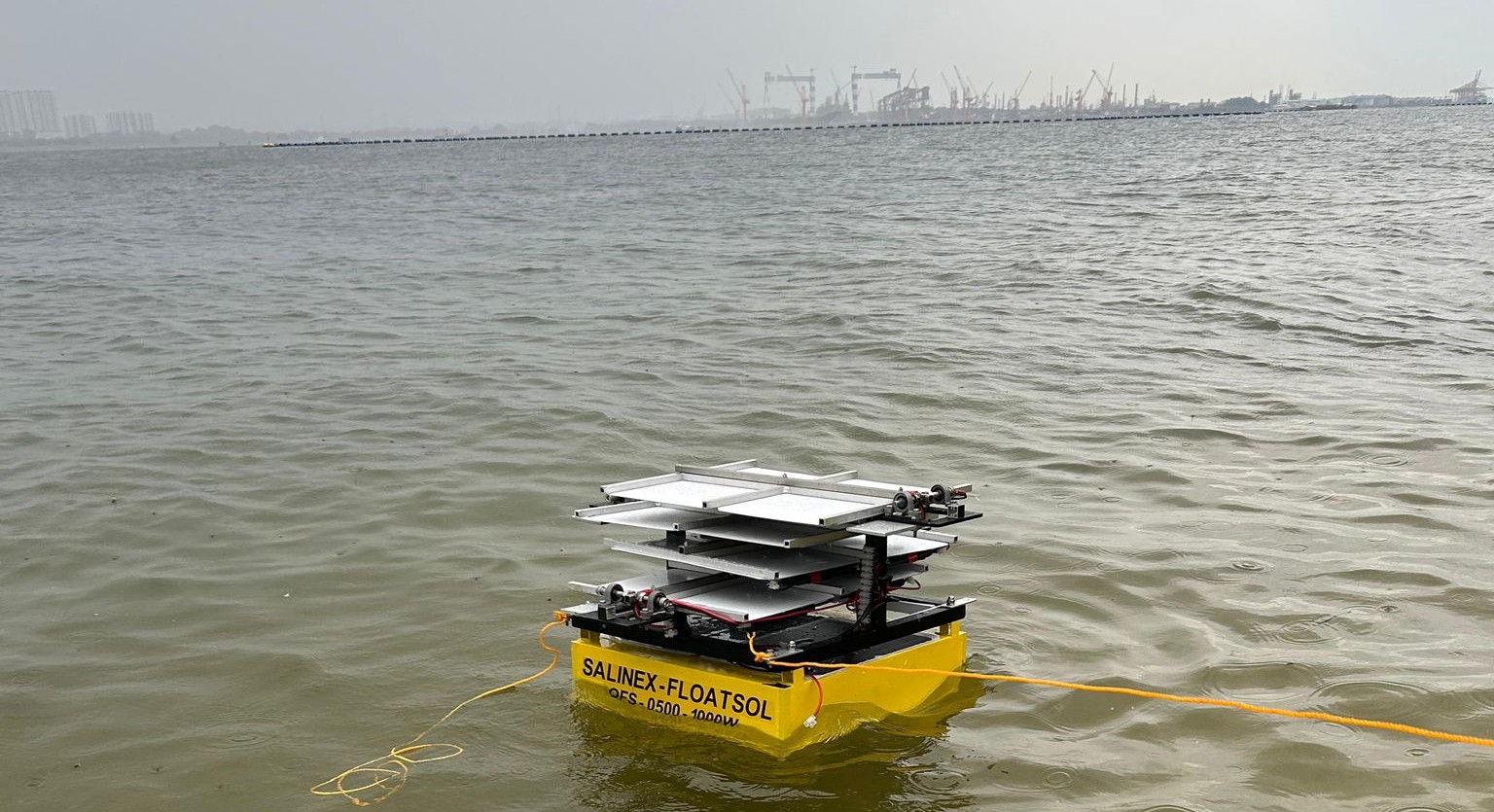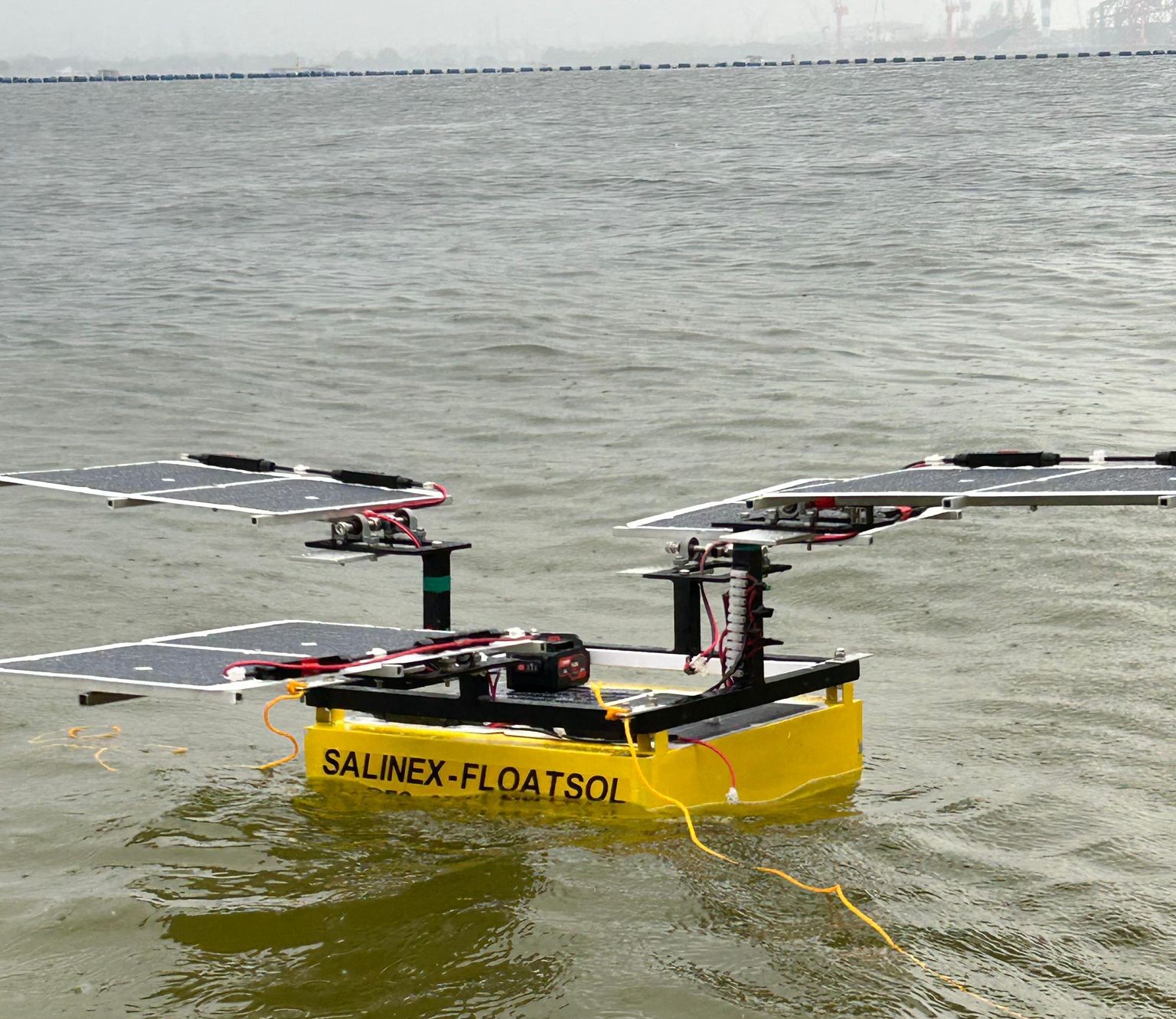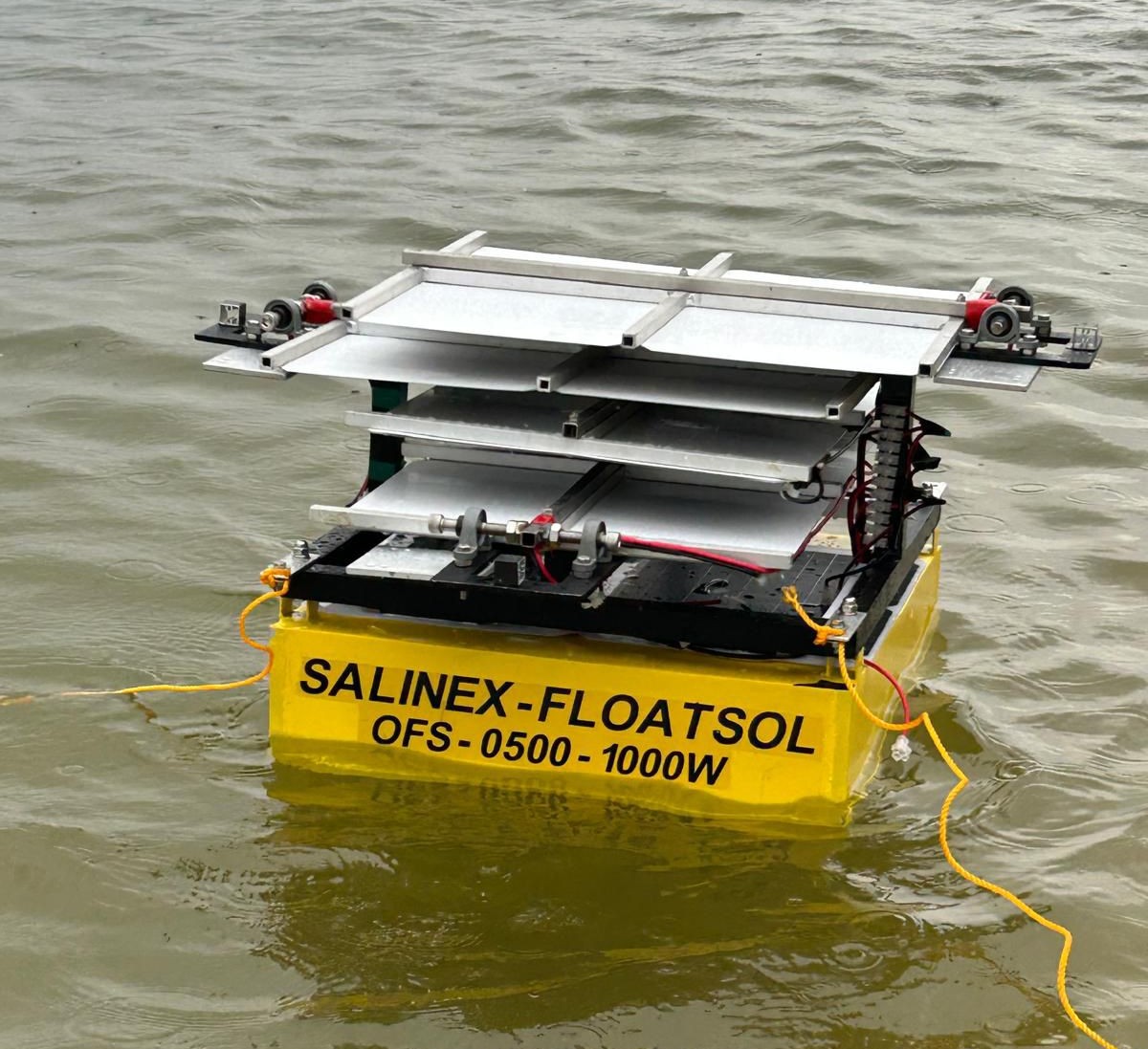
Singapore, October 2025 – Salinex today announced the successful completion of nearshore tests of its 1:10 (1:100) scale Offshore Semi-Submersible Floating Solar PV system, fully designed and built in Singapore. The achievement marks a decisive step in advancing offshore renewable energy solutions and sets the stage for scaling the technology toward full commercial deployment.
A compact yet powerful prototype
The prototype was constructed in marine-grade aluminium, a material chosen for its balance of strength, corrosion resistance and light weight. Built as a precursor to one-tenth scale, to the one-hundredth commercial version, and in-between, the platform demonstrates that floating solar can be engineered for seas as well as sheltered waters. Its design carefully balances structural durability with flexibility, enabling it to operate effectively in challenging marine conditions.
During the nearshore trials the system performed as intended in both of its operational modes. In its deployed mode it was optimized for energy generation in calm to moderate seas, while in its stowed mode it was engineered for storm resilience. Base hydrodynamic data show that the 10:1 model is capable of handling wave heights of four meters or more, depending on site-specific metocean conditions. This dual-mode operation confirms the floater’s ability to adapt to rapidly changing environments — an essential requirement for offshore solar PV systems. Model tests are planned at large test houses, but actual site tests give real-time behaviour under prevailing conditions.

Figure 1. Salinex floating solar prototype operating in production mode during choppy sea conditions.
Advanced sensor integration
The Salinex floater is not only a mechanical platform but also a digitally enabled system. It has been provided with IoT sensor hardware, including a Witmotion 9-axis inertial sensor, gyroscope, accelerometer, inclinometer and a U-Blox Neo-M8P GPS locator for future motion and positioning. This combination of devices allows the system to monitor both its own performance and the conditions around it.
At present the panels are remote transmitter-operated, but future iterations will be fully sensor-aided, allowing the floater to shift between deployed and stowed modes automatically. This transition to autonomous operation will reduce operational risks, improve response time in adverse weather and maximize energy yield. Basic weather sensor data — sunlight, wind and wave height — are also an integral part of the system going forward.
Designed for offshore resilience
Unlike floating solar systems deployed on inland reservoirs or lakes, offshore installations must withstand harsher conditions. Saltwater corrosion, unpredictable currents, strong winds and sudden storms all create challenges that demand innovative engineering solutions.
The semi-submersible structure created by Salinex directly addresses these realities. With its compact floating footprint, while simultaneously according a minimum of five times its area for solar PV, the platform minimizes exposure, while its modular architecture allows it to be scaled up or combined into clusters. The use of marine-grade aluminium provides long-term corrosion resistance, while the integration of intelligent sensors ensures that the platform can respond dynamically to shifting sea states. Larger-scale platforms follow current conventional marine construction techniques.

Figure 2. Floater in stowed configuration designed for storm resilience and automated retraction.
Meeting energy and water needs
Salinex’s prototype has been designed not only to generate clean electricity but also to serve essential human and industrial needs. Even at its current scale, the floater is expected to produce enough energy per day to provide desalinated water for 200 people. Alternatively, the energy can be directed toward hydrogen production, opening pathways into the growing hydrogen economy.
As the technology scales, the outputs will expand proportionally. Larger platforms could provide sustainable electricity, potable water and green fuels to coastal communities, islands and offshore installations. By integrating desalination and hydrogen production directly on board the floater, Salinex demonstrates how energy systems at sea can be self-sustaining and multi-purpose.
Broad applications across industries
The potential applications for this system are wide-ranging. Salinex highlights its utility for Platform Supply Vessels (PSV) and Anchor Handling Vessels (AHV), where it can contribute to displacing the use of LSFO and MDO and thus cutting emissions in offshore logistics. For Tug Supply Boats and water carriers, the floater can provide both electricity and potable water at sea, reducing dependence on shore-based resupply. Not only technologically advanced, it also is very commercially and economically attractive, with payback periods under two years for the above applications.
Looking ahead, robust floating platforms could also generate power mid-way between Singapore and the Bintan-Batam islands, creating offshore charging hubs for the electric ferries expected to operate across the busy corridor in the near future. Beyond civilian transport, autonomous applications for naval defence and marine operations are also envisioned, with the floater serving as a sensor-added, self-powered platform capable of supporting strategic activities in remote waters.
The next step: scaling up
The successful nearshore trials represent only the beginning of Salinex’s offshore solar journey. The company’s next intent is to build a larger unit for deployment in open seas. This scaled-up version will validate performance under harsher conditions and provide the blueprint for full commercial roll-out.
Salinex envisions fleets of semi-submersible floaters operating together as floating microgrids. These networks could provide renewable electricity to offshore industries, support desalination plants and produce hydrogen directly at sea. By combining modular scalability with proven storm resilience, Salinex positions itself at the forefront of offshore renewable energy innovation.
Offshore floating solar in global context
The global floating solar market has expanded rapidly over the past decade, but most installations remain confined to inland reservoirs and sheltered bays. Offshore floating solar presents unique engineering and economic challenges, from wave loading to long-term durability, that only a handful of companies worldwide have sought to address.
With the completion of its prototype tests, Salinex has moved the concept from theory to practice. By combining marine engineering expertise, IoT-enabled sensor hardware and renewable energy technology, the company demonstrates that offshore solar PV can be a viable contributor to the clean energy transition. Singapore, as the birthplace of this innovation, is emerging as a hub for the next generation of floating solar solutions.
About Salinex
Salinex is an innovation-driven company headquartered in Singapore and focused on delivering resilient renewable energy and water solutions. Its engineering team combines expertise in Fixed and Floating Offshore Production systems, to marine-grade construction EPC, project management, instrumentation and integration, to create platforms designed for the world’s most demanding environments.
Through its floating solar program, Salinex is redefining what is possible for renewable energy generation in offshore contexts. Each step — from the successful small-scale prototype trials announced this month to the larger deployments already in development (1:10 and 1:100) — brings the world closer to a future where oceans provide not only food and transport but also clean energy, desalinated water and hydrogen fuels.

